African Violets: Complete Care And Growing Guide
For people who love these sweet plants, African violet care is easy and fun. Knowing what they need is the key.


Quick Facts:
Botanical name: Saintpaulia ionantha
Height: 6 to 9 inches (15 to 23 cm)
Spread: 6 to 9 inches (15 to 23 cm)
Sun exposure: Bright, indirect
Soil requirements: Soilless mix
Hardiness zones: 11 to 12
Gardening tips, videos, info and more delivered right to your inbox!
Sign up for the Gardening Know How newsletter today and receive a free download of our most popular eBook "How to Grow Delicious Tomatoes."
When to plant: Any time indoors
How To Grow And Care For African Violets
With their diminutive size, colorful blooms, and attractive foliage, African violets are popular houseplants. Originating in East Africa, they now come in a variety of leaf and flower colors. Caring for an African violet requires a good balance of light, water and food, which will reward you with blooms all year long.
How to Care for an African Violet
African violet care can be a little finicky, but they are generally easy to grow once you know what they need.
Light
One of the reasons people enjoy African violets so much is that they can be coaxed into flowering repeatedly throughout the year. Light is one of the most important conditions for flowering. They require bright but indirect light for 12 to 16 hours per day. A north or east-facing window is best. You can also use fluorescent or LED lights.
Water
African violets can be a little bit finicky about watering. They need well-drained, consistently moist soil to grow well. Contact with cold water, especially in winter, can be damaging to the leaves. To get around this issue, you can let the container with drainage holes sit in a saucer of water.
Another option is to top water but with room temperature water. Use a thin-spouted watering can to avoid getting the leaves wet.
Temperature & Humidity
The ideal temperature range for African violets is 65 to 80 degrees Fahrenheit (18 to 26 Celsius). They prefer humid conditions, which you can achieve by setting pots on a pebble tray with water or by growing in a terrarium.
Soil
Soil for African violets must drain very well. The fine roots will rot quickly in standing water or soggy soil. High-quality soilless potting mix is a good choice.
Fertilizer
African violets benefit from diluted fertilizer at every watering. Use a balanced product and dilute to one-quarter strength, or use a product formulated specifically for African violets.
Problems, Pests & Diseases
Lack of flowers is a common issue with African violets. It often indicates the plant needs more light. They will also stop blooming if the temperature is too or too cold or if they get too much or too little fertilizer. Balance is essential.
Rot and mildew are also issues but are easy to avoid. Don’t let the roots get soggy and make sure the leaves stay dry and have good air flow. Pests that can trouble African violets include mealybugs, mites, aphids, and thrips.
How to Plant African Violets
The most important consideration before you plant African violet is the choice of container. Good drainage is essential. The pot you choose should have multiple drainage holes. Use a light soil or soilless mix that will drain easily.
How to Make an African Violet Flower
If all the conditions are right, your African violet should bloom over and over again. If it stops blooming, consider light first. It needs at least 12 hours of light per day and 8 hours of darkness.
It could be too cold or too hot, both of which can stop blooms from developing. Be sure you’re not overwatering and use an African violet fertilizer regularly. Finally, the issue could be the pot size. African violets prefer to be slightly root-bound. If the pot is too big, it might not bloom.
Pruning
All you need to do to prune your African violet is remove the outer ring of older leaves as they fade or turn brown. You can also snip off flowers as they fade.
African Violet Propagation
African violets are easy to propagate by leaf cuttings. Trim off a healthy, mature leaf with one inch (2.5 cm) of stem. Place the cut stem into a good rooting mix, like a soilless potting mix. Place it deep enough that part of the leaf is touching the mix. This is where new leaves will form. Once you have four to six leaflets, you can remove them from the mother flower and pot them.
Varieties
You can find hundreds of African violet varieties in garden centers and online. They come in several flower colors, including white, pink, deep purple, maroon, and blue. The flowers can be single, double, ruffled, and star or wasp shaped.
Leaves of different varieties are usually fuzzy or velvety but may be round, oval, or heart-shaped. The colors range from dark green to bright green, silvery green, or variegated.
Frequently Asked Questions
Are African Violets Hard to Care For?
African violet indoor care is precise but not difficult. Get the conditions right, and these plants will reward you with consistent flowers.
Is It Okay to Touch an African Violet’s Leaves?
The leaves are delicate and sensitive, so it’s best to limit touching them to necessary trimming or occasional cleaning.

Becca Badgett was a regular contributor to Gardening Know How for ten years. Co-author of the book How to Grow an EMERGENCY Garden, Becca specializes in succulent and cactus gardening.
-
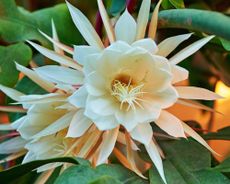 5 Night-Blooming Houseplants – Grow An Indoor Moon Garden
5 Night-Blooming Houseplants – Grow An Indoor Moon GardenThere is something uniquely special about night-blooming houseplants. Set the scene for a magical evening indoors with these fragrant flowering beauties.
By Amy Grant
-
 Beautiful Butterfly Garden Ideas: 10 Ways To Attract Pretty Pollinators To Your Yard
Beautiful Butterfly Garden Ideas: 10 Ways To Attract Pretty Pollinators To Your YardBringing butterflies to your backyard is one of the most important ways you can enhance wildlife, boost pollination and improve biodiversity. These 10 butterfly garden ideas can get you started
By Mary Ellen Ellis
-
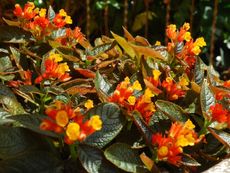 What Are Episcia Plants – Learn About Caring For Episcia Varieties
What Are Episcia Plants – Learn About Caring For Episcia VarietiesGrowing Episcia plants adds eye catching appeal to household décor. These colorful houseplants can test the hand of the most experienced green thumb.
By Laura Miller
-
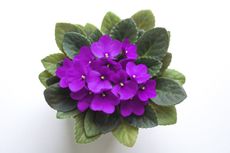 African Violet Flowering Needs: Tips For Getting African Violets To Bloom
African Violet Flowering Needs: Tips For Getting African Violets To BloomMost African violets are sold when flowering. After that, people can have trouble getting them to bloom. What should you do if your African violate won’t flower? Click here for info on African violet flowering needs and tips on how to make African violets bloom again.
By Teo Spengler
-
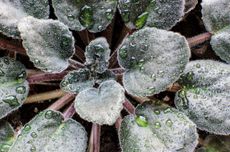 African Violet Watering Guide: How To Water An African Violet Plant
African Violet Watering Guide: How To Water An African Violet PlantWatering African violets isn’t as complicated as you may think. Actually, these charming, old-fashioned plants are surprisingly adaptable and easy to get along with. Wondering how to water an African violet? Click here to learn more about African violet water needs.
By Mary H. Dyer
-
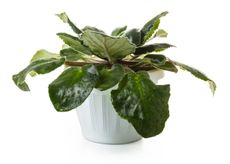 African Violet Leaves Are Curling – What Do Curling African Violet Leaves Mean
African Violet Leaves Are Curling – What Do Curling African Violet Leaves MeanAfrican violets are among the most popular flowering houseplants. But there can be issues with these houseplants. If your African violet leaves are curling, there are a few potential causes and easy solutions. Click this article for more information.
By Mary Ellen Ellis
-
 African Violet Repotting – How To Repot African Violets
African Violet Repotting – How To Repot African VioletsAfrican violets can live a long time, as long as 50 years! To get them there, you need to provide good care which includes repotting African violets. The trick is knowing when to repot an African violet and what soil and container size to use. This article will help with that.
By Bonnie L. Grant
-
African Violet Nematode Control: Treating Root Knot Nematodes In African Violet
Nematodes of African violet are tiny worms that infest the roots. They are extremely destructive. For information about African violet root knot nematodes, click this article. We’ll also give you tips on African violet nematode control.
By Teo Spengler
-
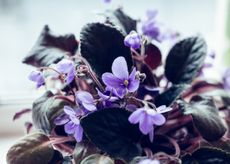 Fertilizing African Violets – Learn How To Feed African Violet Plants
Fertilizing African Violets – Learn How To Feed African Violet PlantsThere are just a few straightforward rules for growing African violets. Water and light needs are two of these, but just as important is how to feed African violet plants. Click on the following article to learn more about African violet feeding.
By Bonnie L. Grant
-
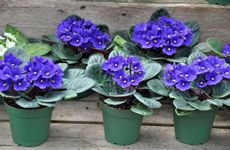 DIY African Violet Soil: Making A Good African Violet Growing Medium
DIY African Violet Soil: Making A Good African Violet Growing MediumSome people think they’ll have issues when growing African violets. But these plants are simple to keep up if you start with the right soil for African violets and the proper location. This article will help provide tips on the most suitable African violet growing medium.
By Becca Badgett